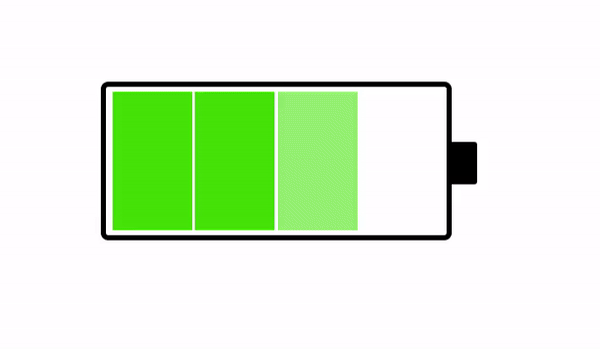Article 2, Clause 2 of the Act on Value Enhancement of Hanok and Other Architectural Assets defines a hanok as ‘a wooden structure with columns, beams, and a traditional Korean roof frame reflecting traditional Korean styles, including its annexes.’ ‘Hanok Building Stabdards’, a sub-regulation under this act, stipulates hanok construction standards as following, so that such hanok to receive government support and special exemptions related to the Building Act:
- Main Structural Components
- The primary structural components above ground, excluding the floor and main staircase, must primarily use wood.
- Except for the above, if materials other than wood are used for the main structural components above ground, the number of such components must be within 15 and not exceed half the total number of structural components above ground, excluding the floor and main staircase.
- Wood used as structural components must meet the standards and quality criteria set by the Korea Forest Service under Article 20, Paragraph 1 of the Act on Sustainable Use of Wood. However, wood recycled from dismantled hanok is an exception.
- Exposed wooden columns should not be directly placed on the ground without a foundation or base stone to prevent decay and rot.
- Wood exposed to the outside must be treated with oil stain, wood stain, or equivalent measures to prevent moisture, decay, and fire.
- Despite the above, local government heads may set separate standards considering the purpose and regional characteristics of the hanok. However, the number of materials other than wood used in the main structural components above ground, excluding the floor and main staircase, must not exceed half the total number of components used.
- Roof
- Roof tiles used should be traditional Korean tiles forming the shape of the bulged and sunk tiles.
- The eaves must be at least 90 centimeters deep to enhance the identity of hanok, prevent wood decay, and control sunlight.
- Ensure that rainwater from the eaves does not damage adjacent land.
- If constructing an eyebrow roof, reinforce it securely with supports or hardware for user safety.
- Despite the above, local government heads may set separate standards considering regional and landscape characteristics.
- Exterior Walls and Windows
- Wooden components forming the building’s exterior walls, such as columns, lintels, and window frames, should be visibly installed and not artificially concealed.
- Exterior walls should be set back from the outer surfaces of the columns. However, exceptions are made for fire walls built with stones or bricks.
- Each floor should be visually distinguishable from the outside by using main structural components, railings, eyebrow roofs, and wood finishes.
- When installing insulation, joints should be closely fitted or staggered to minimize heat loss through the joints.
Annex 1 of the Enforcement Decree of Tourism Promotion Act specifies the registration standards of hanok experience business as follows:
- The hanok must meet the criteria set by the Minister of Land, Infrastructure and Transport under Article 27 of the Act on Value Enhancement of Hanok and Other Architectural Assets. However, this does not apply to hanok designated or registered as cultural properties under the Cultural Heritage Preservation Act or registered as excellent architectural assets under the Act on Value Enhancement of Hanok and Other Architectural Assets.
- The total floor area of spaces used for lodging and convenience facilities must be less than 230 square meters. However, this does not apply to hanoks that meet any of the following conditions:
- Hanok designated or registered as cultural heritages under the Cultural Heritage Preservation Act
- Hanok registered as superior architectural assets under the Act on Value Enhancement of Hanok and Other Architectural Assets
- Hanok in hanok villages or traditional houses specified by ordinances of special autonomous cities, provinces, cities, counties, or districts
- Convenience facilities such as bathrooms or showers must be provided to prevent inconvenience of guests during lodging experiences.
- At least one fire extinguisher must be installed inside or around guestrooms, and if lodging experiences are provided, each guestroom must be equipped with standalone fire detectors and carbon monoxide detectors (applicable only if heating equipment is installed individually).
- If cooking facilities are installed, they must comply with standards set by the Urban Gas Business Act, the Act on Safety Control and Business of Liquefied Petroleum Gas, the Fire Prevention and Safety Control Act, the Fire Services Act, and other relevant laws.
- Facilities must be capable of supplying potable water that meets the quality standards of drinking water under Article 5, Paragraph 3 of the Drinking Water Management Act (including water supplied from small-scale water supply facilities defined in Paragraph 14 of the same article).
- There must be a system to disinfect guestrooms, reception desks, lobby facilities, corridors, staircases, bathrooms, shower facilities, washrooms, and toilets at least once a month.
- Conditions must allow for regular cleaning of guestrooms and bathrooms and regular washing of bedding.
- Facilities for ventilation must be provided. However, this does not apply if natural ventilation is possible through windows.
- The source water of bathrooms must meet the quality standards of bath water under Article 4, Paragraph 2 of the Public Health Control Act.
- A manager capable of managing the hanok must be present during business hours.
- If lodging experiences are provided, a rate chart must be posted at the reception desk or on the website, and the posted rates must be observed.
Hanok stays and traditional hotels share the common feature of using facilities in the form of traditional Korean building, hanok. The difference lies in the fact that traditional hotels are classified as lodging properties under the Building Act, whereas hanok stays are mostly classified as single-family houses. Generally, hanok stays use existing hanoks with preservation value as lodging establishments, whereas traditional hotels are newly constructed buildings in the form of hanok exclusively for lodging purposes.

